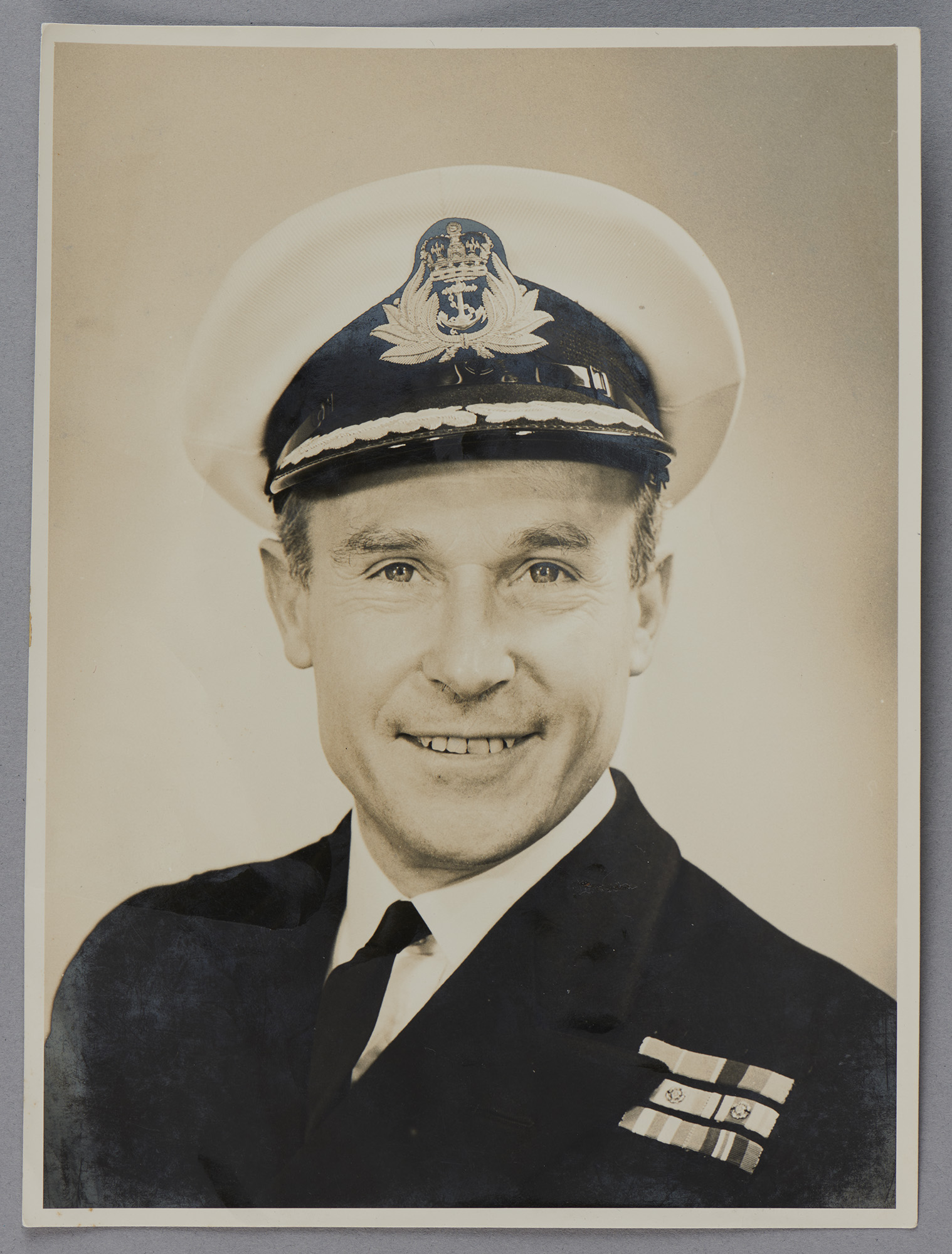

Display No. 20A
BAMFIELD, Douglas
Douglas Bamfield’s naval career began at age 14 when he joined HMS Worcester, now called the Thames Nautical Training College. Upon turning 15, he transferred to the Royal Naval Training Establishment Shotley, also known as HMS Ganges. After completing his time at Shotley, Bamfield officially joined the Royal Navy as a Boy Seaman in January 1940.
During the Second World War, Bamfield was posted to vessels in the Russian and Malta convoys; he was awarded medals for his service in these theatres of war. Family reminiscences tell of a time during the Russian convoys when his ship was torpedoed returning from North Russia, the ship was not sunk but managed to find safe harbour at Scarpa Flow, North Scotland.
After the Second World War, Bamfield requested to be transferred from the Royal Navy to the Royal New Zealand Navy (RNZN); he entered service with the RNZN on 12 April 1955. His first postings were at HMNZS Tamaki and HMNZS Philomel, during that time he was promoted to Senior Commissioned Gunner.
Bamfield returned to the United Kingdom in 1956 to complete training at the Royal Navy College at Greenwich, followed by gunnery training at HMS Excellent. He was promoted to Acting Lieutenant and returned to New Zealand in 1957. Upon his return, Bamfield was posted to the Loch-class frigate HMNZS Rotoiti with the confirmed rank of Lieutenant.
In June 1959 he became the Staff Officer at HMNZS Toroa which was the Otago Division of the Royal New Zealand Navy Volunteer Reserve (RNZNVR); concurrently, he was appointed as Resident Naval Officer Dunedin.
Bamfield’s next role was as Aide-de-Camp to the Governor General. Bamfield served two years as an Aide-de-Camp and was promoted to Lieutenant Commander in April 1961.
Between 1962 and 1963, Bamfield was posted as First Lieutenant (Executive Officer) of the newly commissioned Endeavour II. He was part of the ship’s company that sailed the ship to New Zealand, he also took part in her first deployment to Antarctica in December 1962. Following this posting, he spent time at several shore bases: HMNZS Wakefield, the Navy Office in Wellington; HMNZS Olphert, the Reserves division in Wellington; and HMNZS Philomel where he joined the staff of Commodore Auckland as the Assistant Drafting Officer.
In September 1966 Bamfield was posted to the minesweeper HMNZS Hickleton which was operating from Singapore. He was part of the company that took the ship back to the United Kingdom and returned her to the Royal Navy. On the conclusion of this deployment, Bamfield returned to New Zealand and in January 1967 was posted to the Defence Office in Wellington and worked on a project to unify the three armed services into what would become the New Zealand Defence Force (NZDF).
In November 1967 Bamfield was given command of Endeavour II and granted the rank of Acting Commander. In October 1969 he was posted back to Philomel and was released from the RNZN in December; his final rank was Commander.
Awarded medal(s)
Member of the Most Excellent Order of the British Empire (MBE)
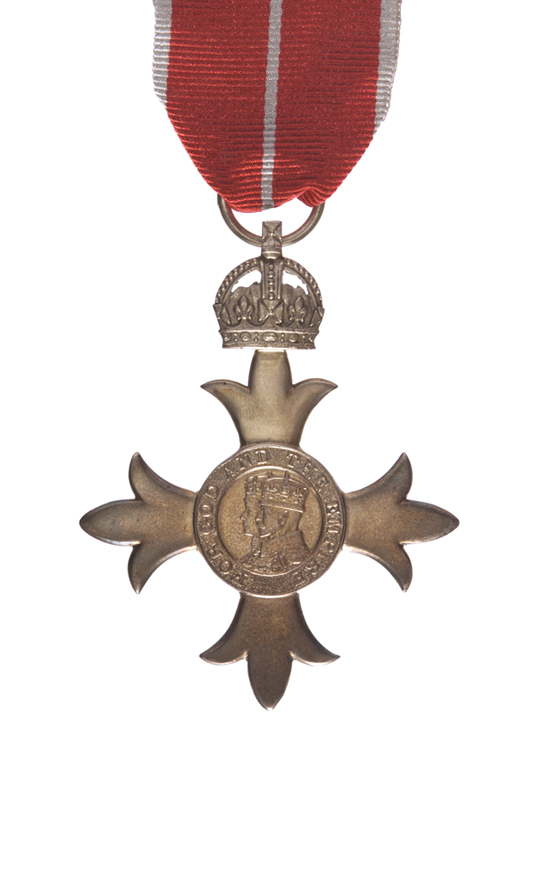
Established by King George V in 1917 for services to the British Empire. The Order has five classes: Knight and Dame Grand Cross (GBE), Knight Commander and Dame Commander (KBE / DBE), Commander (CBE), Officer (OBE) and Member (MBE). The MBE badge is in frosted silver. In December 1918, the Order was split into two divisions: a Civil Division for civilian recipients; and a Military Division for awards to commissioned officers and warrant officers for distinguished service in action. The insignia of the Civil and Military Divisions is distinguished only by the ribbon, the military award having a narrow central stripe. Prior to the introduction of the New Zealand Order of Merit in 1996, the Order of the British Empire was the most common honour awarded to New Zealand military personnel.
The 1939-1945 Star
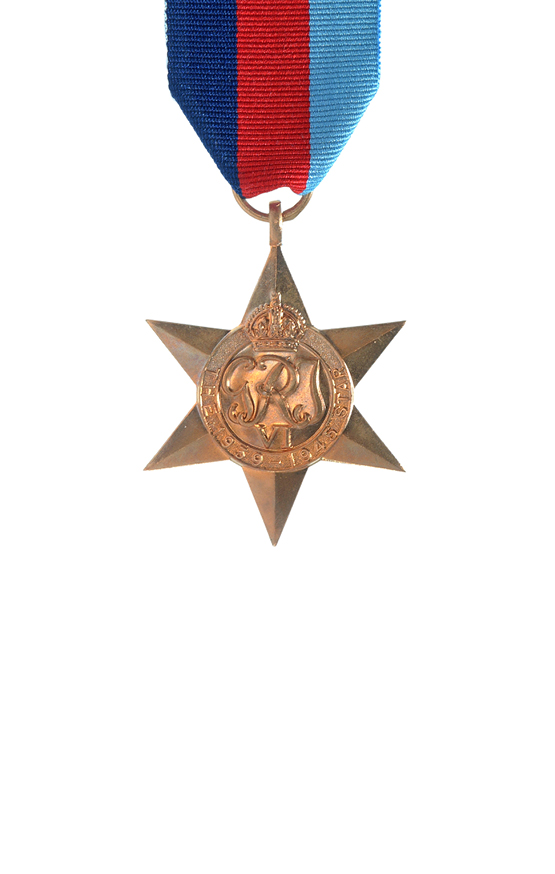
The 1939-45 Star is the first in a series of eight campaign stars instituted in 1945 to recognise service in World War Two. The ribbon has three equal vertical stripes of dark blue, red and light blue. The dark blue stripe symbolises the service of the Navy and the Merchant Navy, the red stripe symbolises the service of the Army, and the light blue stripe symbolises the service of the Air Force. The equal width bands represent the equal contributions of the three service arms towards victory. The ribbon was devised by King George VI. Two clasps could be awarded with this medal: ‘Battle of Britain’ and ‘Bomber Command’. Only aircrew would qualify for these clasps although a small number of Fleet Air Arm naval pilots flew for the air force and would be eligible for the ‘Battle of Britain’ clasp.
The Atlantic Star
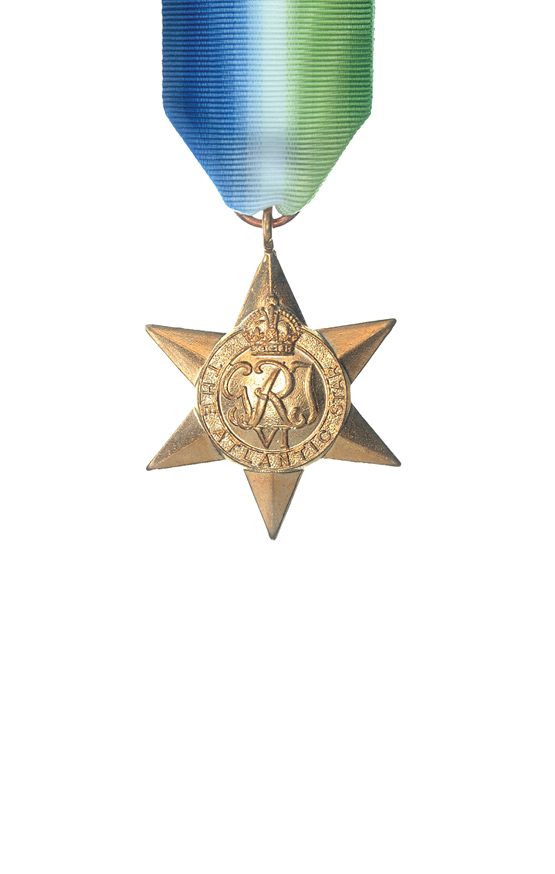
The Atlantic Star was awarded for service during the Second World War. It was instituted to commemorate the Battle of the Atlantic the longest continuous military campaign in the Second World War running from 3 September, 1939 – 8 May, 1945. Six months naval service or four months air service in the Atlantic, United Kingdom (‘home’) waters or North Russian waters was normally required. The ribbon is watered silk coloured blue, white and green, symbolising service in the oceans. Two clasps could be awarded with this medal: ‘France and Germany’ and ‘Air Crew Europe’. Personnel issued the Atlantic Star who then qualified for either the France and Germany and the Air Crew Europe Stars were awarded a clasp in respect of the second only (as only one clasp could be worn on the star).
The Africa Star
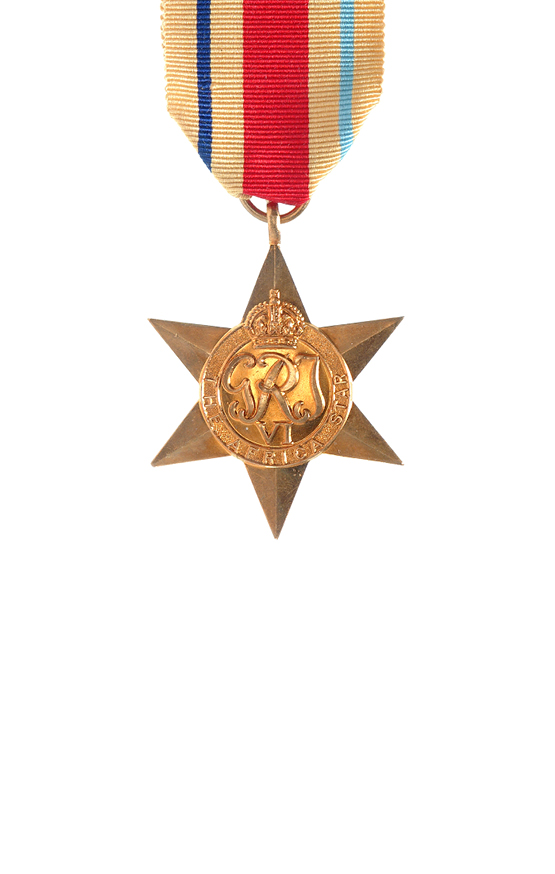
The Africa Star was awarded in the Second World War for service in North Africa between 10 June 1940 and 12 May 1943. The ribbon is pale buff in colour, with a central vertical red stripe, and narrower stripes, one dark blue and the other light blue. The pale buff background symbolises the desert, the central red stripe symbolises the Army, the dark blue stripe symbolises the Navy and Merchant Navy, and the light blue stripe symbolises the Air Force. Three clasps could be awarded with this medal: ‘North Africa 1942-43’, ‘8th Army’, and ‘1st Army’. Naval personnel could only qualify for the ‘North Africa 1942-43’ clasp – for in shore service.
The Italy Star
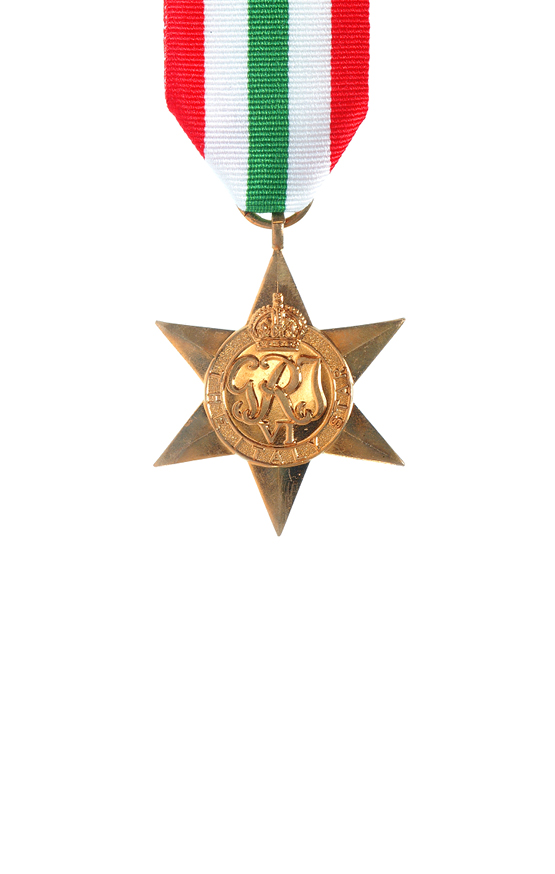
The Italy Star was awarded for operational service in Italy and adjacent countries in the Second World War between 11 June 1943 and 8 May 1945. No clasps were awarded. The ribbon uses the national colours of Italy; red, white and green as seen on the flag.
The War Medal 1939-1945
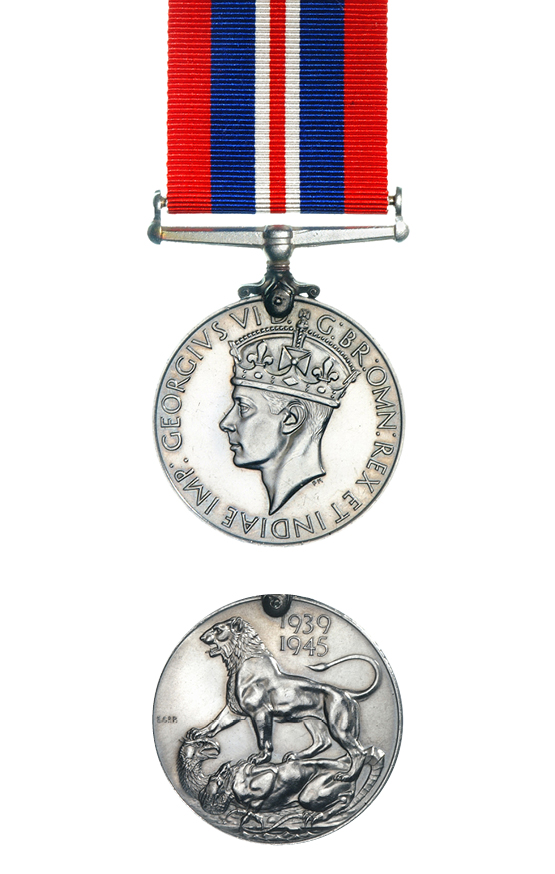
The War Medal 1939-45 was awarded across the British Commonwealth to all full-time members of the Armed Forces in the Second World War for 28 days service between 3 September 1939 and 2 September 1945, irrespective of where they were serving. The ribbon is the red, white, and blue of the (British) Union Flag. There is a narrow central red stripe with a narrow white stripe on either side. There are broad red stripes at either edge, the two intervening stripes being blue.
A bronze oak leaf on the medal ribbon denotes that the recipient was Mentioned in Despatches. To be Mentioned in Despatches a member of the armed forces had their name mentioned in an official report, written by a superior officer, and sent to a higher command. The report would describe the individual’s gallant or meritorious action in the face of the enemy.
Malta George Cross 50th Anniversary Commemorative Medal

A commemorative medal created by the Government of Malta and awarded by, or in the name of, the President of Malta to individuals who served between 10 June 1940 to 8 September 1943, during and after the Siege of Malta.
The New Zealand Operational Service Medal
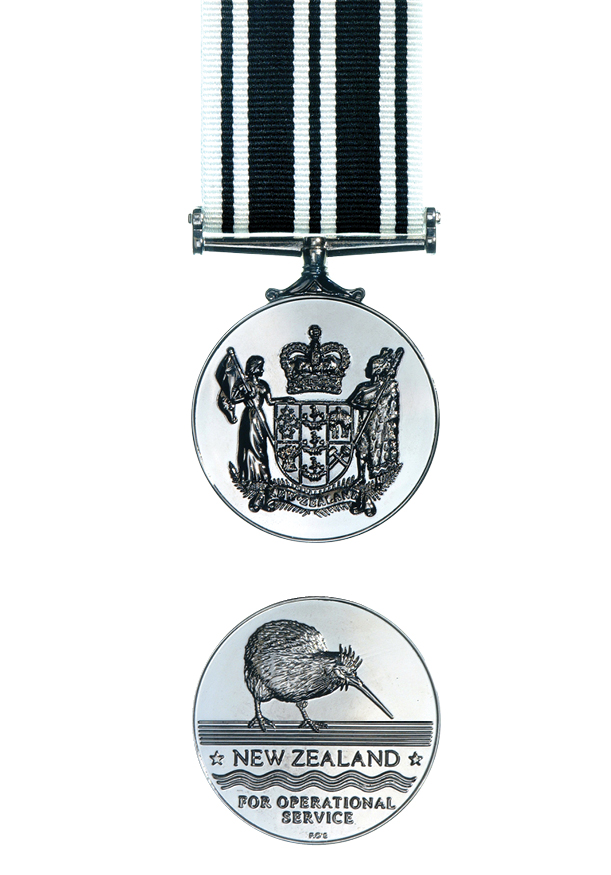
The New Zealand Operational Service Medal (NZOSM) was instituted in 2002 to recognise New Zealanders (military and civilians) who have served since the end of the Second World War. The NZOSM provides recognition for those who have earned a campaign medal or completed 7 days or more of operational service since 3 September 1945. It is awarded once only to an individual, regardless of how many times he or she has deployed on operations. The medal features the New Zealand Coat of Arms on the obverse and a kiwi on the reverse. The ribbon is black and white stripes, representative of New Zealand’s national colours.
The Naval General Service Medal 1915-1962
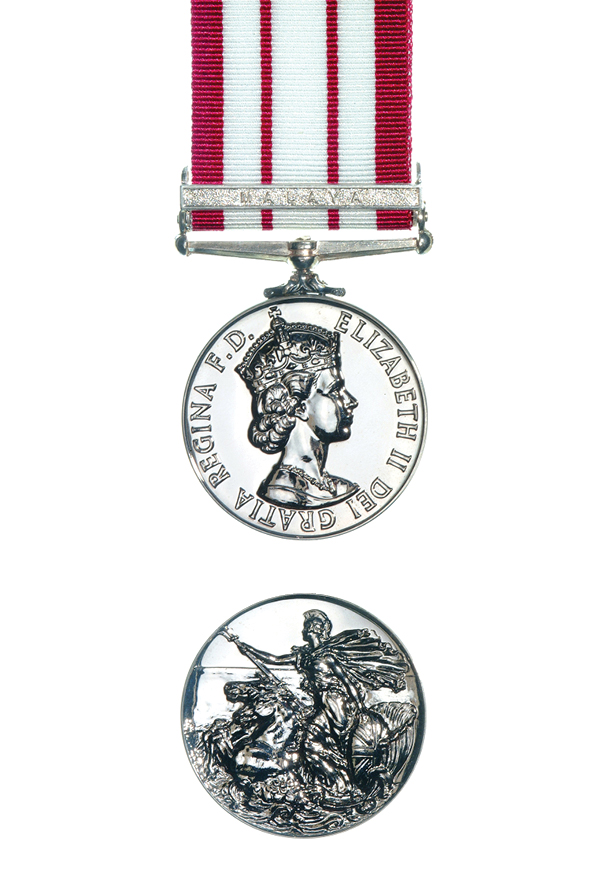
The Naval General Service Medal (NGSM) 1915-1962, was instituted in 1915 to recognise service in minor naval operations for which no separate medal was intended. They were always issued with a clasp for the specific area of operation. A total of seventeen clasps were awarded. Examples in our collection include the ‘Persian Gulf 1909-14’ clasp for operations against gun-runners; the ‘Palestine 1936-39’ and ‘Palestine 1945-48’ clasps which were issued for service in the pre-war Arab uprising and post-war Jewish insurgency; the ‘Minesweeping 1945-51’ clasp which was awarded for six months minesweeping service afloat; the ‘Malaya’ clasp recognising the service of naval personnel, including the Royal New Zealand Navy, during the Malayan Emergency of 1948-1960; and the ‘Yangtze 1949’ clasp for those on HMS Amethyst and other vessels attacked by Communist Chinese forces.
New Zealand Special Service Medal (Nuclear Testing)

The New Zealand Special Service Medal (Nuclear Testing) was awarded to personnel who were part of an official New Zealand Government presence at atmospheric nuclear tests between 1956 and 1973. This includes naval personnel who served in HMNZ Ships Pukaki and Rotoiti at Operation Grapple (British nuclear weapon tests in the Pacific), in 1957-58, as well as those aboard RNZN vessels sent to protest French nuclear tests at Mururoa Atoll in July 1973. The medal is gilt. The obverse of the medal features a representation of the New Zealand Coat of Arms. The reverse features a representation of a bouquet of New Zealand flora, composed of fern fronds and sprigs of blossom of pohutukawa, manuka, kowhai and Mt Cook lilies with a scroll inscribed “For Special Service”. The ribbon is 32mm in width with an orange-yellow central stripe with Crimson, red, white and black stripes. The central stripe of the ribbon represents the core of the nuclear explosion fireball and stripes either side allude to the red luminous spherical wave formation radiating from it. The black represents the destruction caused by the explosion.
Arctic Star
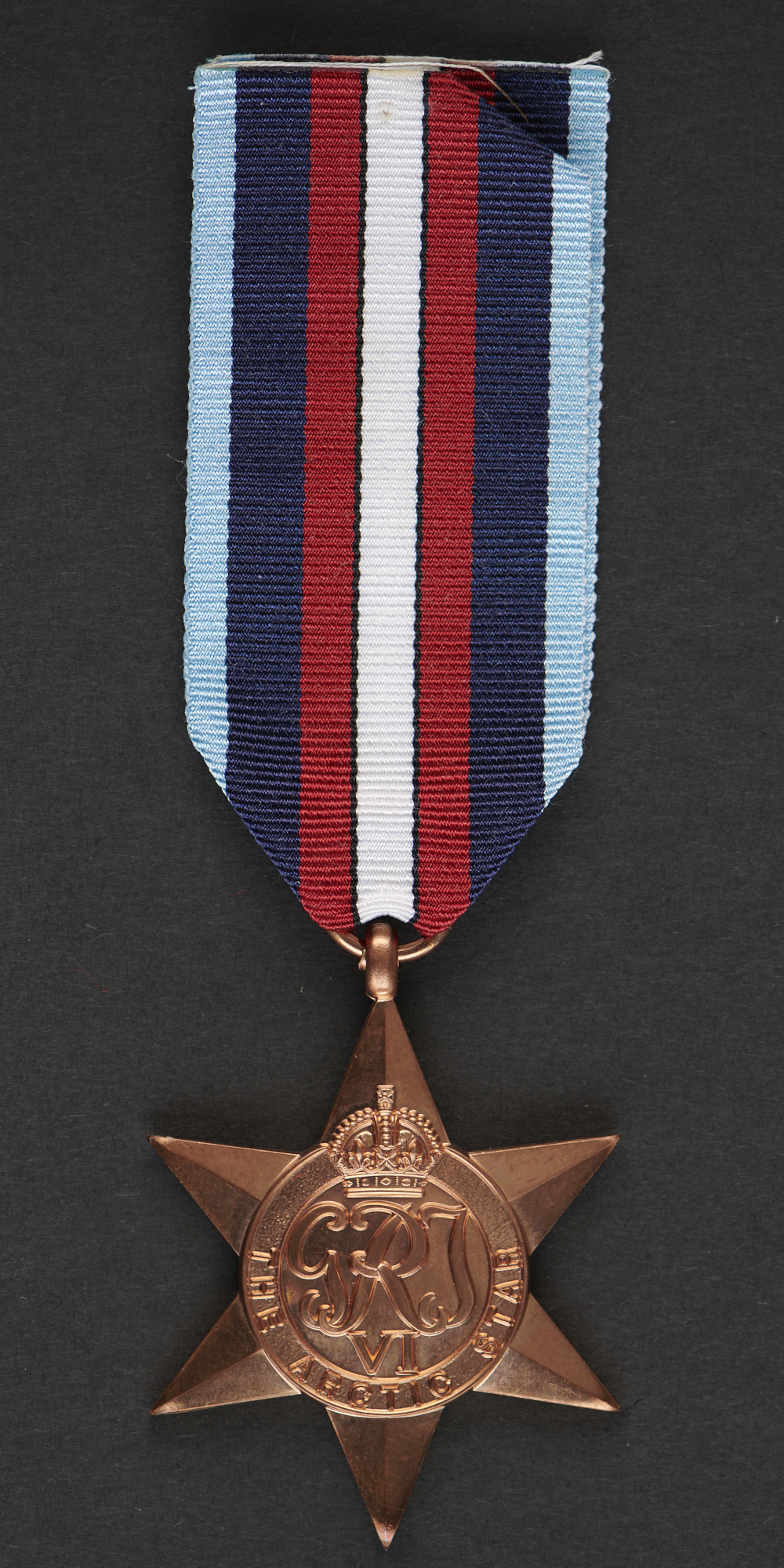
As the result of lobbying, by veterans and associated organisations, the British Government issued the Arctic Star retrospectively from March 2013. The Star primarily commemorates those who assisted or saw service on the ships of the convoys that sailed to Northern Russia in support of the Russian allies.
New Zealand Defence Service Medal
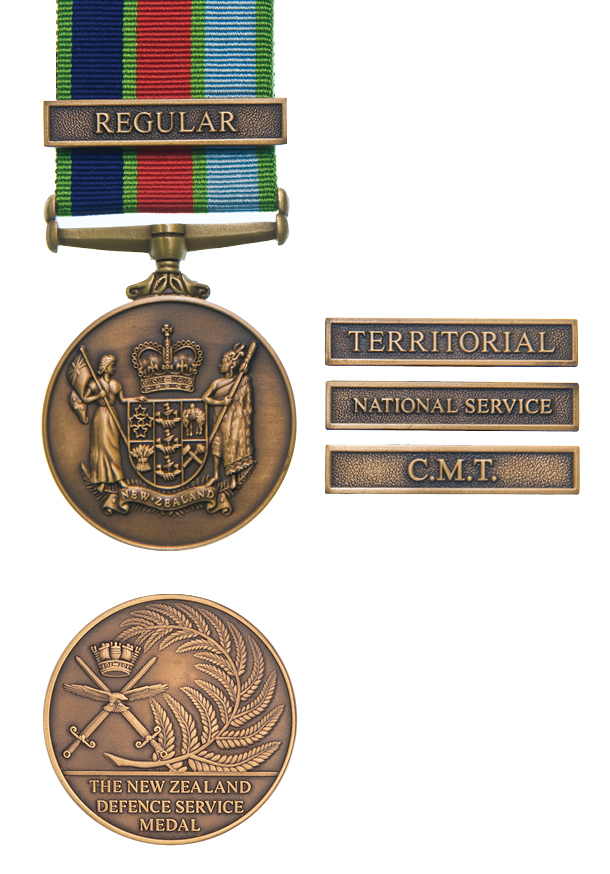
The New Zealand Defence Service Medal (NZDSM) was instituted in April 2011 to recognise military service since the end of the Second World War. One or more of four clasps can be awarded with the medal determined by military service undertaken: Regular, Territorial, C.M.T. (Compulsory Military Training) and National Service.
Eligibility is three years of service in either the Regular or Territorial (Reserve) Forces of the New Zealand Defence Force (Navy, Army, Airforce), or those who undertook Compulsory Military Training (under the Military Training Act 1949) or National Service (under the National Military Service Act 1962).
The medal itself has the New Zealand fern frond and the badge of the New Zealand Defence Force which combines the emblems of the (Navy, Army and Air Force). The ribbon colours also represent the three services: Navy (dark blue), Army (red) and Air Force (light blue).
Soviet 40th Anniversary Medal

This medal was issued by the Russian (Soviet) government in 1985 to commemorate victory over Nazi Germany in 1945. Although primarily awarded to Russian citizens, it was also awarded to Commonwealth veterans (including Merchant Navy) who took part in the Arctic Convoys delivering essential supplies to the Soviet Union during the Second World War. For this reason it is sometimes referred to as the Russian Convoy medal.
Pingat Jasa Malaysia Medal
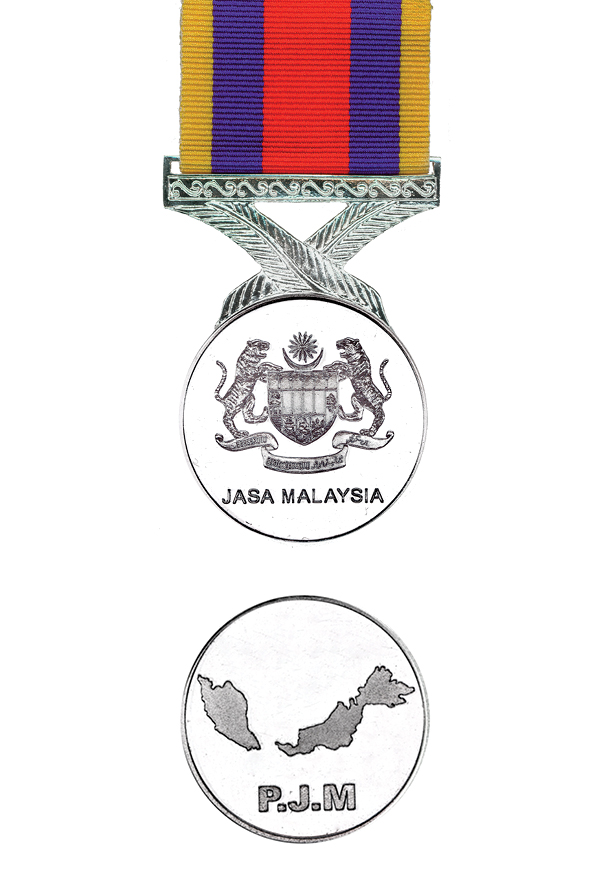
Awarded by the Malaysian Government to members of the British and Commonwealth Armed Forces who served in the prescribed operational area of Malaysia and Singapore during the “Confrontation” and Emergency” periods (1957-1966). The ribbon has five vertical stripes in the colours of the Malaysian national flag.

